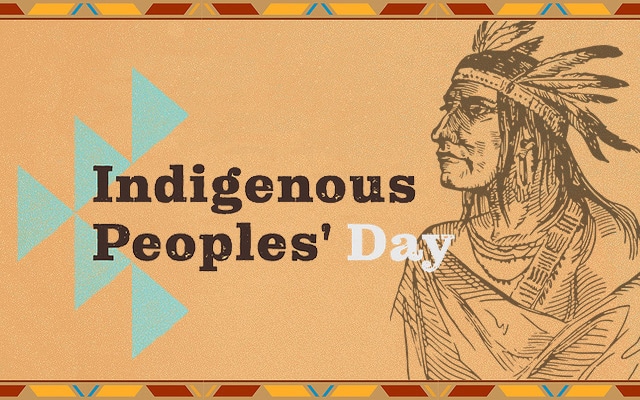This Monday, October 11th, we honor Indigenous Peoples’ Day. We owe both debts of gratitude and restitution to our fellow Indigenous brothers and sisters, and it’s a great day to pay respects to and deepen our learning about the ancient spiritual and practical wisdom that Indigenous and First Nations cultures have brought to our global family.
One concept that fascinates me is how Indigenous people viewed the breath. In many cultures, breath is described as life itself. Prana, for example, which describes life force energy, is also inextricably linked with the breath, and sometimes prana and breath are described interchangeably.
First Nations people also described the spiritual and energetic power of the breath, through their work with the “shared breath.” Shared breath, much like our modern descriptions of the biofield today, helps us recognize the interconnectedness between humans, Spirit, and the Earth.
I found this paper on shared breath and embodied copresence fascinating, and thought you might as well. In the paper, the authors write,
“In some relational and ceremonial contexts, embodied copresence is experienced within the mouth, nasal passages, lungs, airway, and stomach. Indeed, shamanic practices (such as sucking and blowing) during healing and other rituals also correlate to such an embodied sharing (activated through the breath) with nonhumans. Such practices are widely known as part of the repertoire of shamanic healing performances and are well attested in the Cree, St’át’imc, and Vepsian cases, ethnologically.”
Shared breath seems central to many shamanic traditions. In a world where realization of our interconnectedness and fostering Right Relationships with Spirit and the Earth seem of utmost importance, perhaps we can consider what shared breath means to us.
How do you experience shared breath? Please let me know by sharing your comments below — and please enjoy this peer-reviewed published scientific paper on shared breath, in honor of Indigenous Peoples’ Day.
Learn More About the Author

Shamini Jain, Ph.D. is the Founder and CEO of the Consciousness and Healing Initiative (CHI), a collaborative accelerator that faciliates the transdisciplinary science and real-world application of consciousness and healing practices. As a clinical psychologist, as well as a research scientist in the fields of psychoneuroimmunology (PNI) and integrative medicine for over a decade, Shamini formed CHI through a deep understanding that major systemic transformations, which will place healing at the center of medicine and scientific inquiry, will most rapidly occur through a networked approach that fosters collaboration and innovation among key stakeholders. Shamini obtained her B.A. in Neuroscience and Behavior from Columbia University, and her Ph.D. degree from the SDSU/UC San Diego Joint Doctoral Program in Clinical Psychology. She conducted her clinical residency at the La Jolla VA Hospital/UC San Diego, and her post-doctoral fellowship at UCLA’s Division of Cancer Prevention and Control Research. She has won numerous awards from scientific societies for her research in PNI and integrative medicine and lectures on these topics in varied venues. In addition to running CHI, Shamini is an Assistant Professor in Psychiatry at UC San Diego and is an active member of the UC San Diego Center for Integrative Medicine.


So very kind of you to share this paper!!
I use breath and breathwork extensively in both self- healing and the healing of other and to bless animals I encounter. I send love and rainbow light- specific to what is needed by the soul I am sending to. I’d love to read this paper.
Thank you for sharing.
You generosity is a great joy for us readers and for today and all the days of its receipt.
there are grateful hesrts you might not see and we breathe it all in as we read and that share resonates and we share, the giving gift
with love and gratitude .
Thank you …
Holotrophic breathing is one of the most powerful thecnic I I have ever experienced. It allows you to get an alterated state of consciousness without any risk.
I really like reading through a post that can make men and women think. Also, thank you for allowing me to comment!